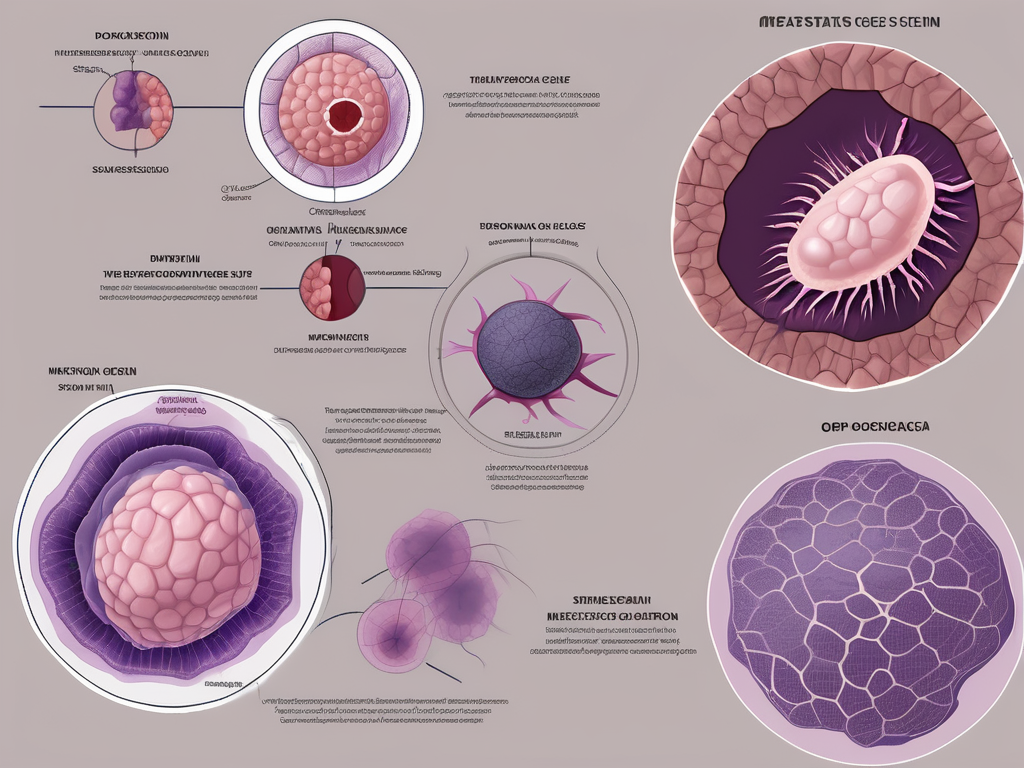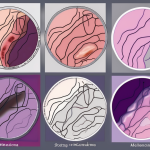This insightful blog post breaks down the TNM staging system used in skin cancer treatment, highlighting its critical role in guiding prognosis and therapy decisions. It explains how Tumor size (T), Lymph Node involvement (N), and Metastasis (M) are assessed to determine the cancer stage, from 0 (localized) to IV (advanced spread). Accurate staging informs tailored treatment plans, ranging from surgery to advanced therapies, ensuring personalized care. The article emphasizes the importance of understanding TNM results for better treatment decision making, showcasing the system’s significance in predicting disease progression and facilitating effective patient care.
Skin cancer is a serious health concern that affects millions of individuals worldwide. When dealing with this disease, accurate staging plays a crucial role in determining the prognosis and treatment options available. In this article, we will delve into the TNM staging system for skin cancer and explore its significance in predicting outcomes for patients. Understanding the components of the TNM staging system, its role in determining the extent of the disease, and its influence on treatment decision-making are all essential aspects of managing skin cancer effectively.
Understanding the TNM Staging System for Skin Cancer
The TNM staging system is a widely used classification system for cancer that focuses on three key factors: tumor, lymph nodes, and metastasis. By assessing these factors, doctors can categorize the stage of skin cancer and determine its severity. This system helps provide a standardized language for describing the extent of the disease, allowing healthcare professionals to communicate effectively and make informed decisions.
When it comes to skin cancer, the TNM staging system takes into account various factors, including the size of the primary tumor (T), whether cancer has spread to nearby lymph nodes (N), and the presence of distant metastasis (M). Each factor is further classified into subcategories, providing a more comprehensive assessment.
The first factor, T, refers to the size and extent of the primary tumor. It helps determine how deeply the cancer has invaded the skin and whether it has spread to nearby tissues. The subcategories for T range from T0 to T4, with T0 indicating no evidence of a primary tumor and T4 indicating a large tumor that has invaded nearby structures.
The second factor, N, focuses on whether the cancer has spread to nearby lymph nodes. Lymph nodes are small, bean-shaped organs that play a crucial role in the body’s immune system. They help filter out harmful substances, including cancer cells. The subcategories for N range from N0 to N3, with N0 indicating no evidence of cancer in the lymph nodes and N3 indicating extensive lymph node involvement.
The third factor, M, assesses the presence of distant metastasis. Metastasis occurs when cancer cells break away from the primary tumor and spread to other parts of the body through the bloodstream or lymphatic system. The subcategories for M include M0, indicating no evidence of distant metastasis, and M1, indicating the presence of distant metastasis.
By combining the T, N, and M categories, doctors can determine the overall stage of skin cancer. The stages range from stage 0 to stage IV, with stage 0 indicating carcinoma in situ (abnormal cells found only in the outermost layer of the skin) and stage IV indicating advanced cancer that has spread to distant organs or tissues.
Understanding the TNM staging system is crucial for both patients and healthcare professionals. It helps guide treatment decisions, predict prognosis, and assess the effectiveness of different treatment approaches. By accurately staging skin cancer, doctors can develop personalized treatment plans that target the specific needs of each patient.
The Importance of Accurate Staging in Skin Cancer Prognosis
Accurate staging plays a vital role in determining the prognosis for individuals diagnosed with skin cancer. By classifying the disease into different stages, healthcare professionals can estimate the likelihood of the cancer spreading and assess the appropriate treatment options. The staging system helps gauge the potential for disease progression, aiding in the development of effective treatment plans tailored to the individual’s needs.
Additionally, accurate staging allows healthcare professionals to monitor and track the progress of skin cancer over time. By regularly evaluating the disease’s stage, doctors can make necessary adjustments to the treatment plan, ensuring optimal care and increasing the chances of a positive outcome.
Exploring the Different Components of the TNM Staging System
Let’s now take a closer look at the various components of the TNM staging system for skin cancer:
- Tumor (T): This component examines the size and depth of the primary tumor, determining its progression within the skin layers and organs adjacent to the affected area.
- Lymph Nodes (N): Evaluating whether the cancer has spread to the nearby lymph nodes is crucial in assessing the potential for further metastasis. This information helps determine the stage of the disease and influences treatment decisions.
- Metastasis (M): This component looks for signs of cancer spreading to distant organs or tissues. Identifying metastasis aids in determining the appropriate treatment course and predicting the overall prognosis.
By combining these three components, the TNM staging system provides a comprehensive assessment of the skin cancer’s spread and severity. This classification system ensures consistency in communication among healthcare providers and facilitates treatment planning.
How TNM Staging Helps Determine the Extent of Skin Cancer
The TNM staging system is instrumental in determining the extent of skin cancer within the body. By evaluating the tumor size, lymph node involvement, and metastasis, doctors can categorize the disease into different stages, ranging from Stage 0 to Stage IV.
Stage 0 signifies carcinoma in situ, where abnormal cells are present but have not invaded surrounding tissues. As the stages progress, tumor size, lymph node involvement, and metastasis increase, indicating a higher risk of disease progression.
Accurate staging allows healthcare professionals to assess the spread of skin cancer, providing critical information for treatment planning and estimates of prognosis. The stage of the disease guides the decision-making process, enabling doctors to choose appropriate therapies tailored to the individual’s specific needs and overall health.
The Role of TNM Staging in Treatment Decision-making for Skin Cancer
The TNM staging system plays a crucial role in treatment decision-making for skin cancer. By accurately classifying the disease, healthcare professionals can determine the most appropriate treatment options, including surgery, radiation therapy, chemotherapy, immunotherapy, or targeted therapy.
For example, early stages of skin cancer may only require surgical removal of the tumor. However, as the disease progresses, more aggressive approaches such as radiation therapy or a combination of treatments might be necessary to target cancer cells that have spread to nearby lymph nodes or distant organs.
Further, TNM staging helps determine the frequency and intensity of follow-up care to monitor the patient’s response to treatment and any potential recurrence. It empowers healthcare professionals to optimize the management of skin cancer by providing personalized care plans tailored to the specific stage of the disease.
Interpreting TNM Staging Results and their Implications for Skin Cancer Patients
Interpreting TNM staging results can be a complex task. However, healthcare professionals are equipped with the knowledge and expertise to guide patients throughout the process. Understanding the implications of the staging results is crucial for individuals diagnosed with skin cancer.
Staging results provide valuable information about the prognosis, potential for disease progression, and available treatment options. They help patients and their loved ones make informed decisions about their care and understand the importance of adhering to treatment plans.
Prognostic Factors Influenced by TNM Staging in Skin Cancer
TNM staging influences several prognostic factors in skin cancer, including survival rates, disease recurrence, and treatment outcomes. The accurate classification of the disease allows healthcare professionals to assess the individual’s specific case and provide personalized prognostic information.
Additionally, TNM staging helps determine the risk of developing further complications or secondary cancers. By identifying the stage of skin cancer, healthcare professionals can provide appropriate counseling and preventive measures to reduce the risk of future health issues.
Prognostic Stage Group
In addition to the individual components of the TNM staging system, the overall prognostic stage group provides a comprehensive assessment of the disease’s severity. This grouping takes into account the tumor, lymph nodes, and metastasis information and categorizes the cancer into different stages, indicating the overall prognosis.
Based on the prognostic stage group, healthcare professionals can estimate the likelihood of disease progression and tailor the treatment plan accordingly. This information empowers individuals with an understanding of their specific situation, allowing them to make informed decisions about their treatment options and lifestyle choices.
Other Prognostic Factors
While the TNM staging system provides valuable information, other prognostic factors can also influence the prognosis for skin cancer patients. These factors may include age, overall health status, genetic predisposition, and response to treatment. Healthcare professionals consider these additional factors alongside TNM staging to provide a comprehensive assessment of an individual’s prognosis. By evaluating various prognostic factors, doctors can offer personalized treatment plans that address the specific needs and circumstances of each patient.
In conclusion, accurate staging using the TNM classification system is pivotal in determining the prognosis and treatment options available for individuals with skin cancer. Understanding the components of the TNM staging system, the role it plays in determining the extent of the disease, and its influence on treatment decision-making are vital for both patients and healthcare professionals. By incorporating the TNM staging system into clinical practice, healthcare providers can offer personalized care, monitor disease progression, and guide individuals through their skin cancer journey with confidence. Remember, early detection and accurate staging are key to successfully managing skin cancer and improving outcomes. Stay proactive, seek medical advice, and embrace the support available to you in your battle against skin cancer.





